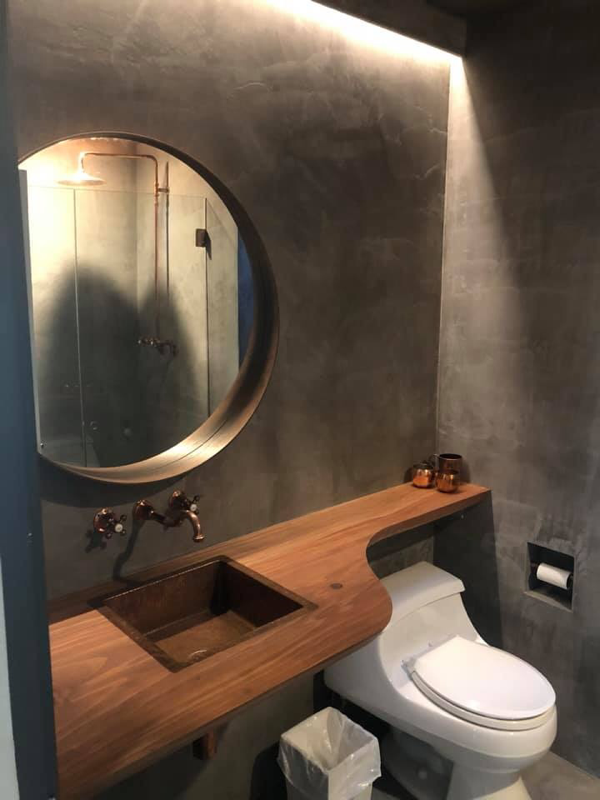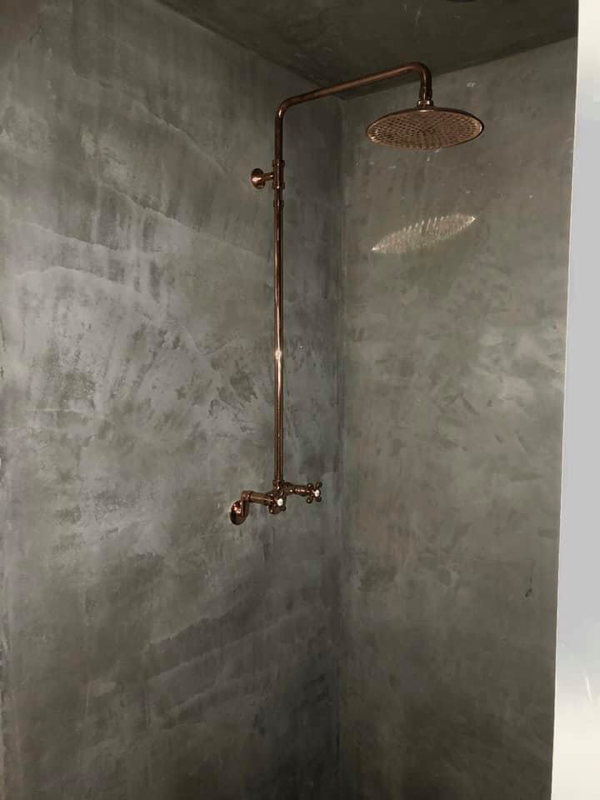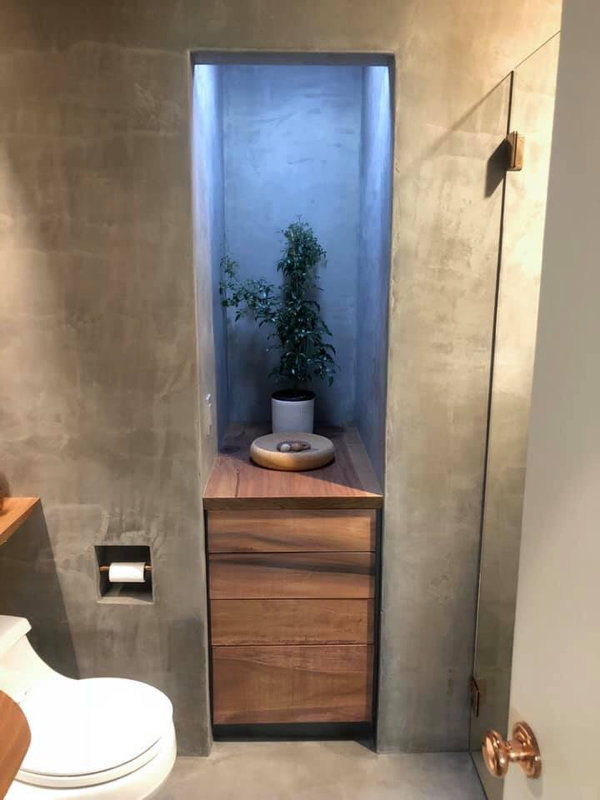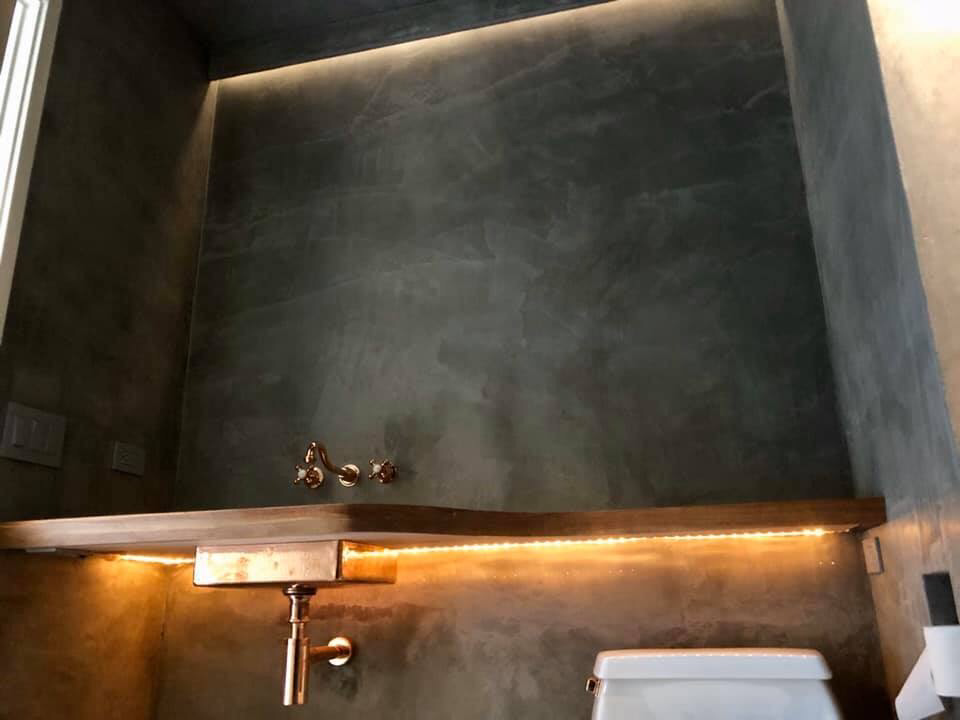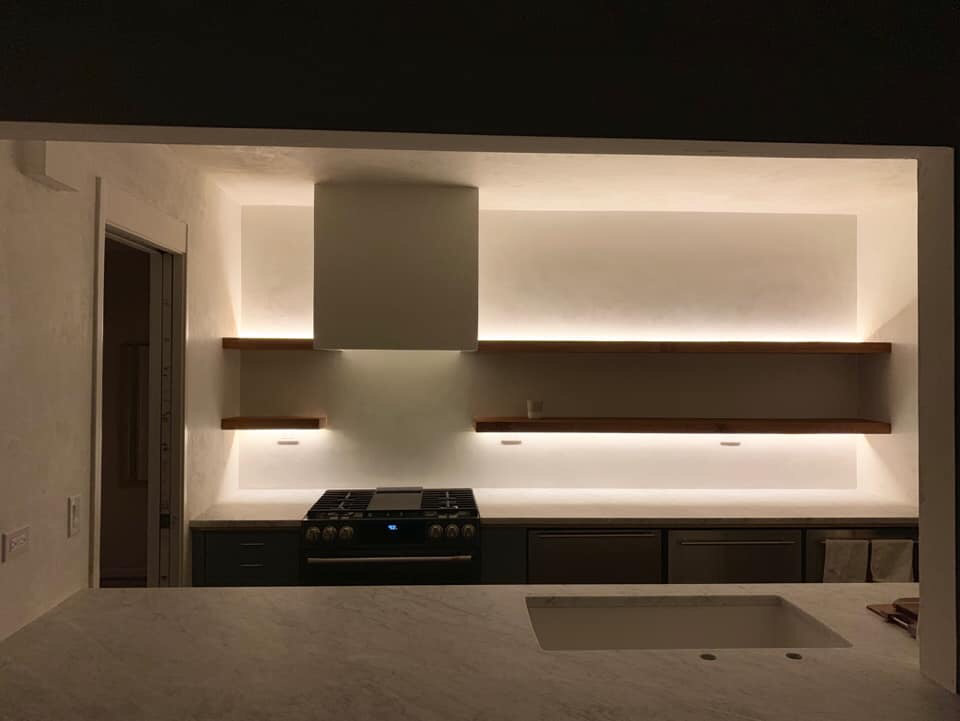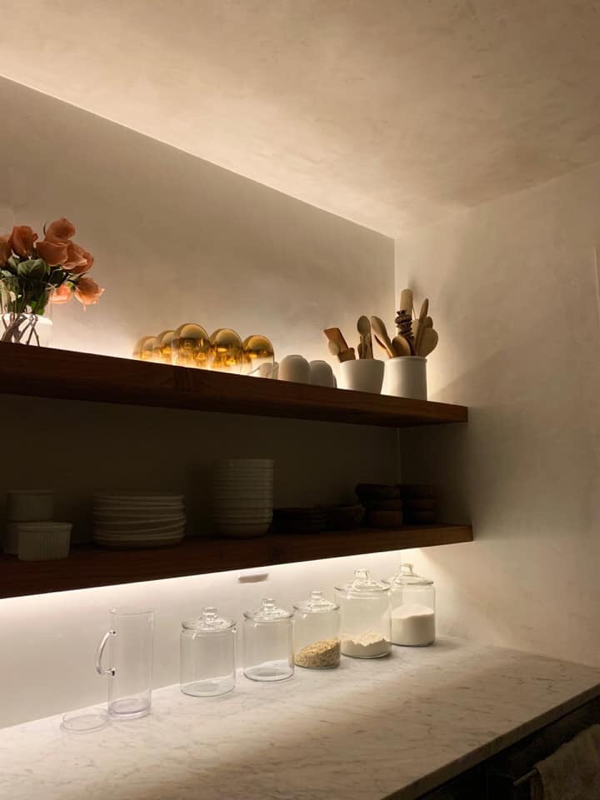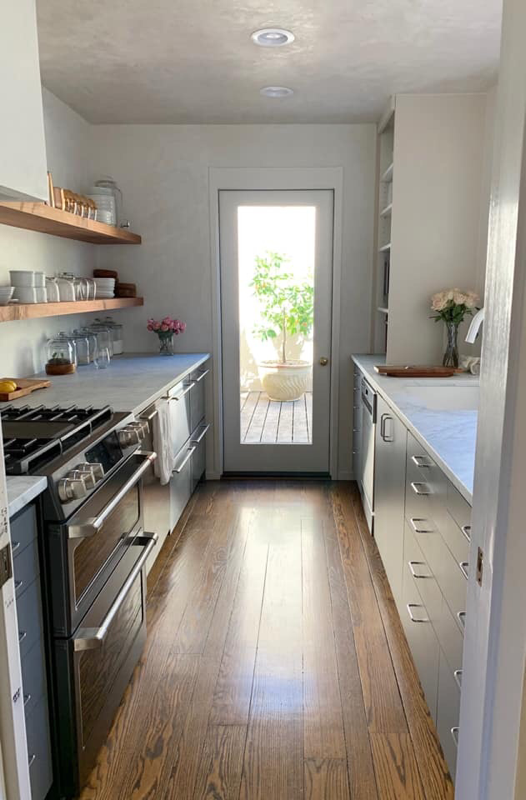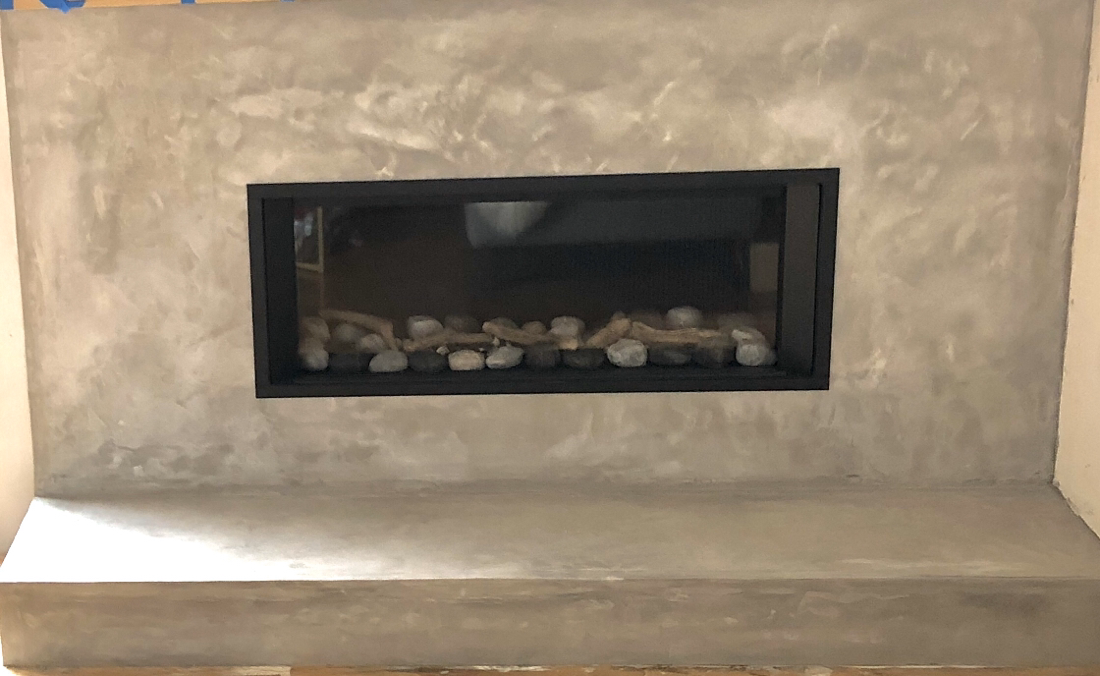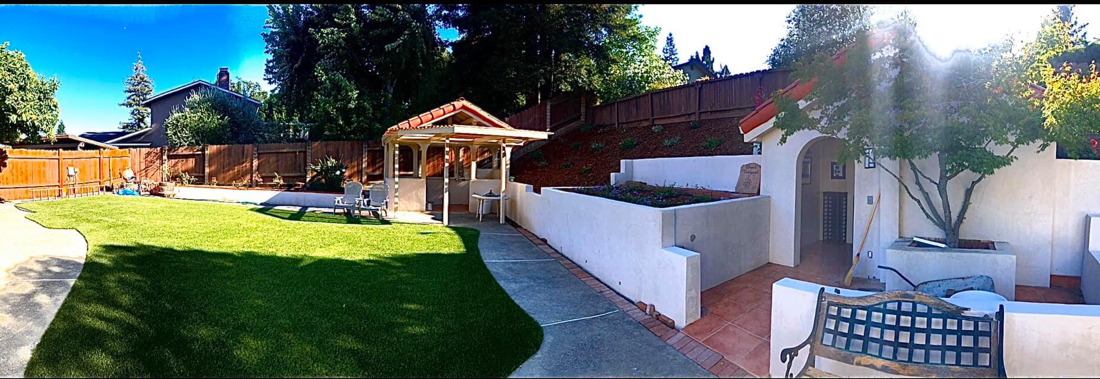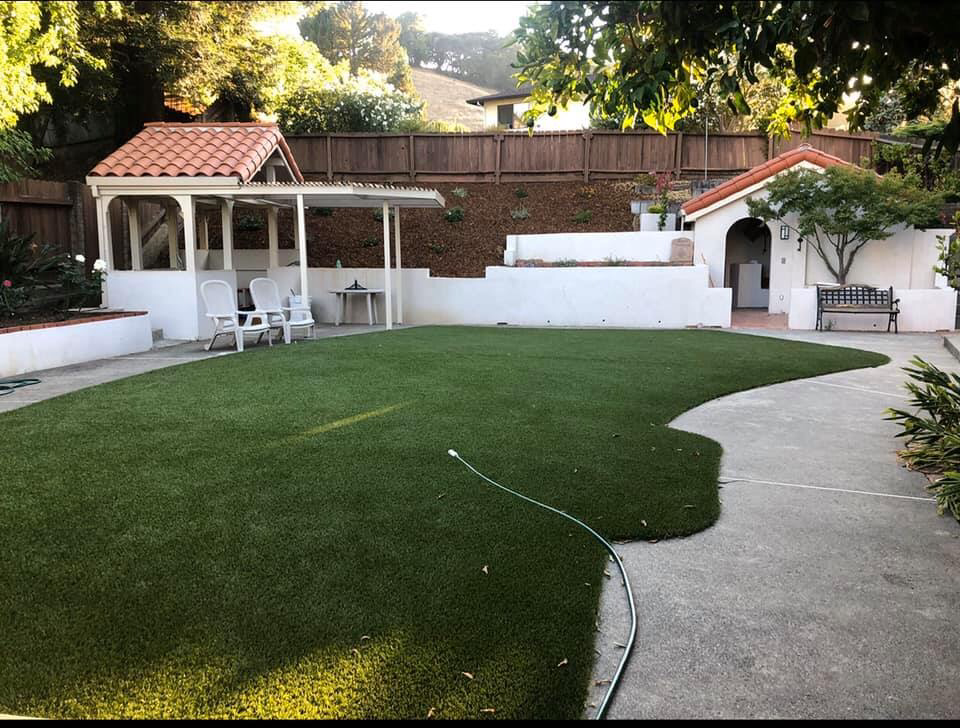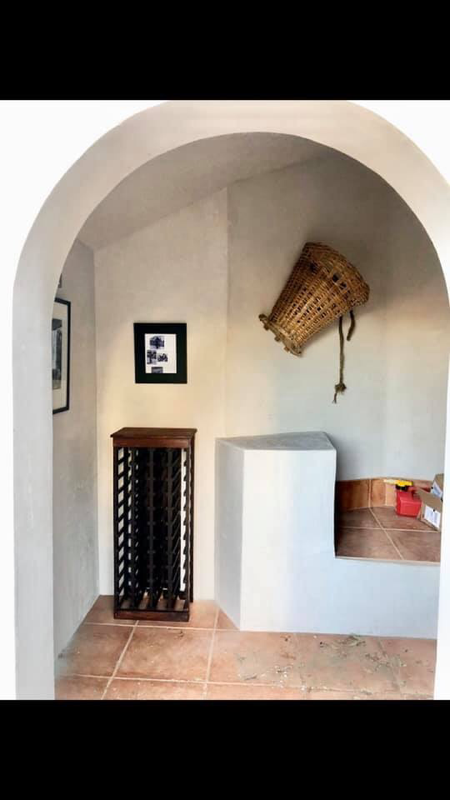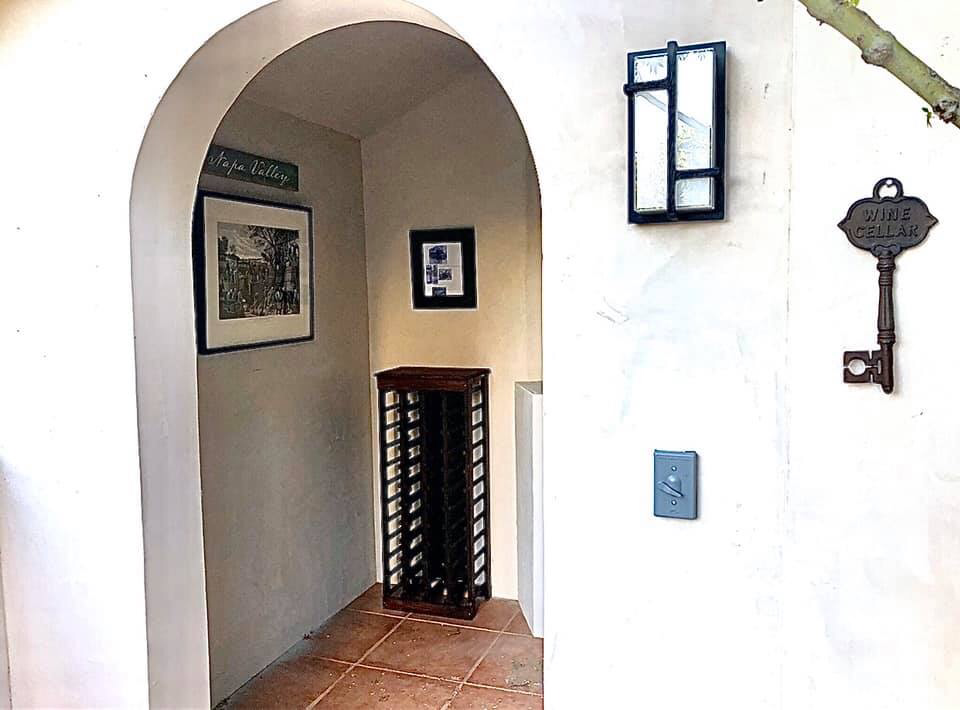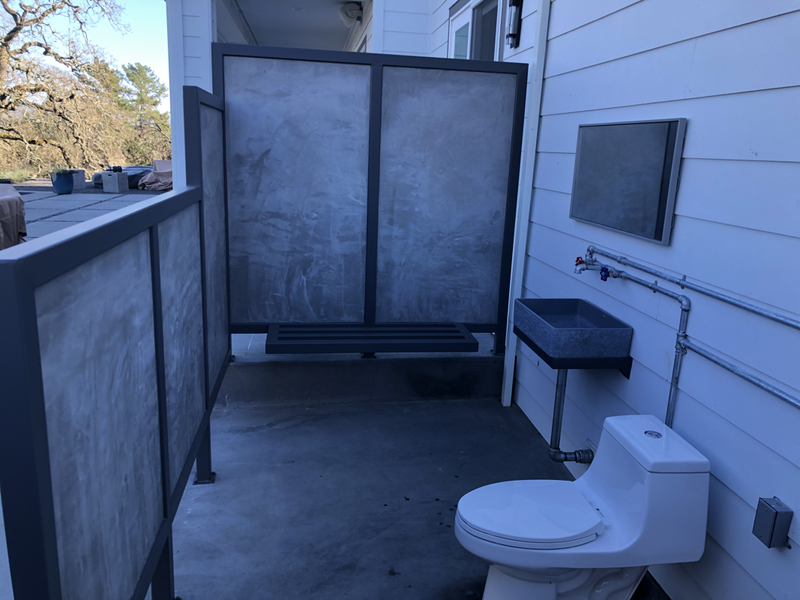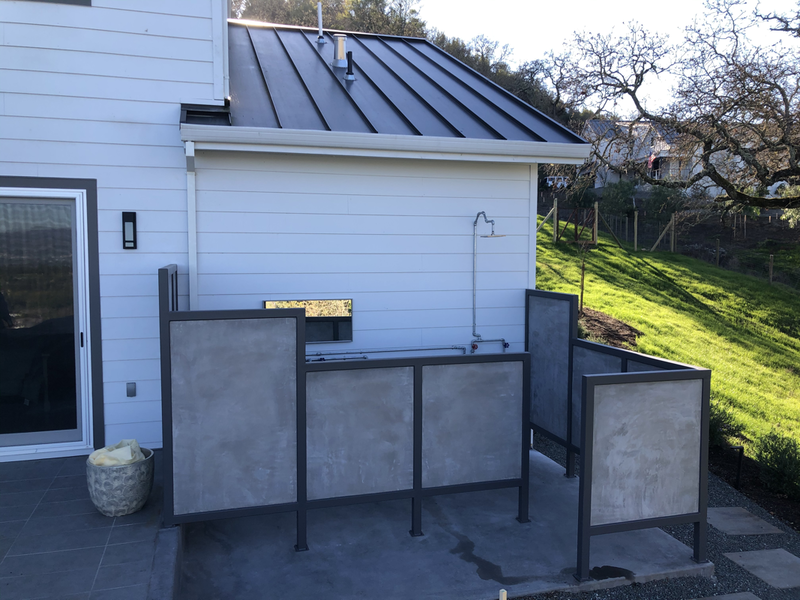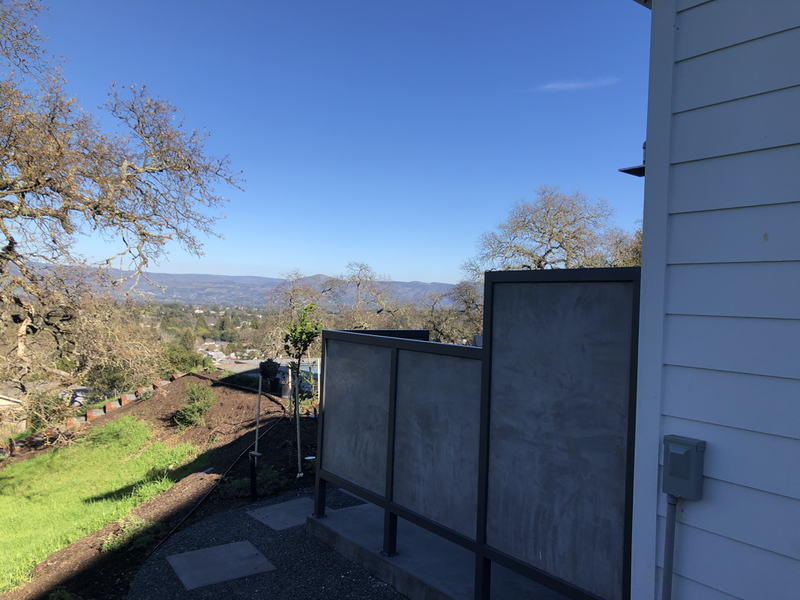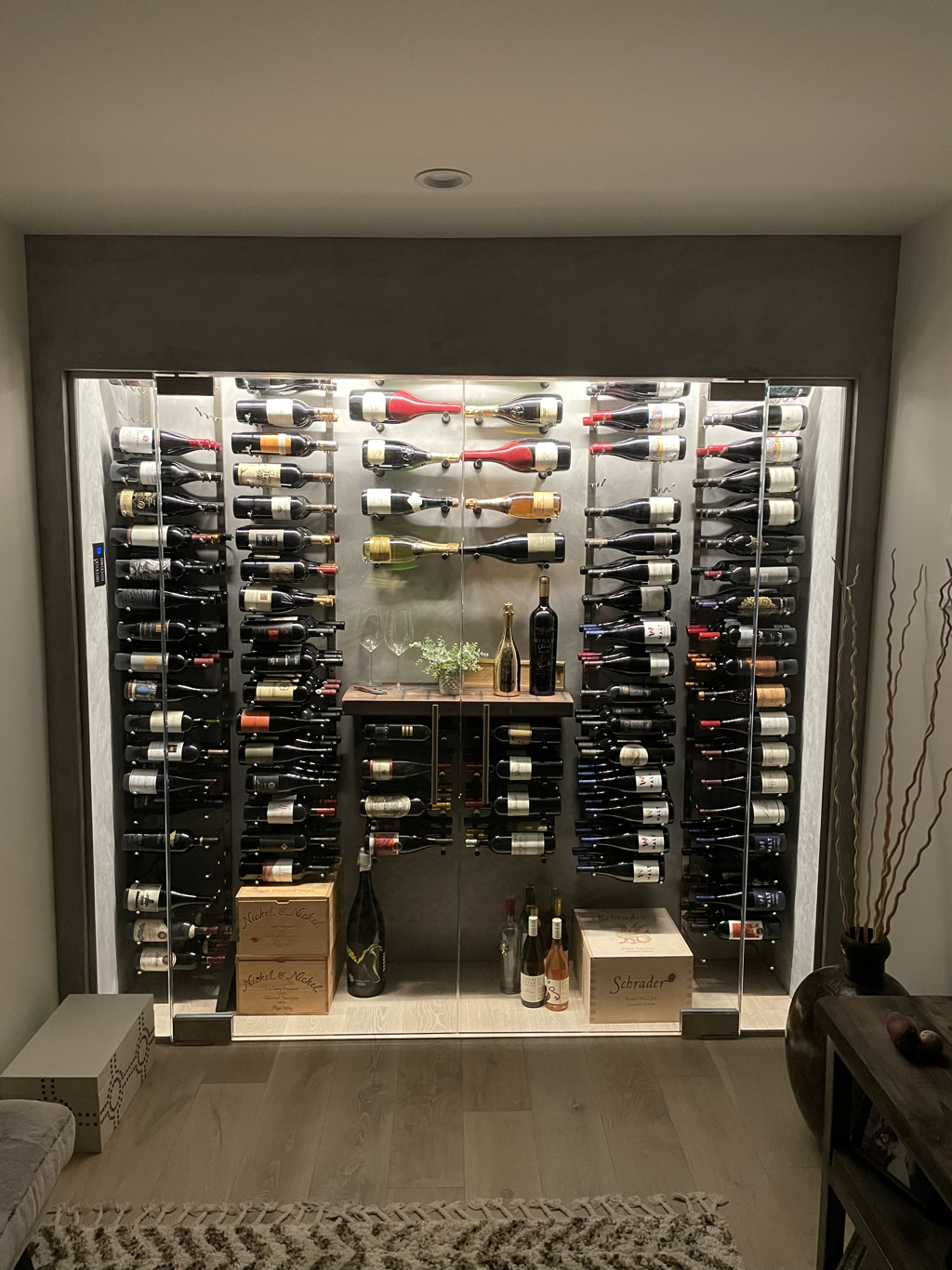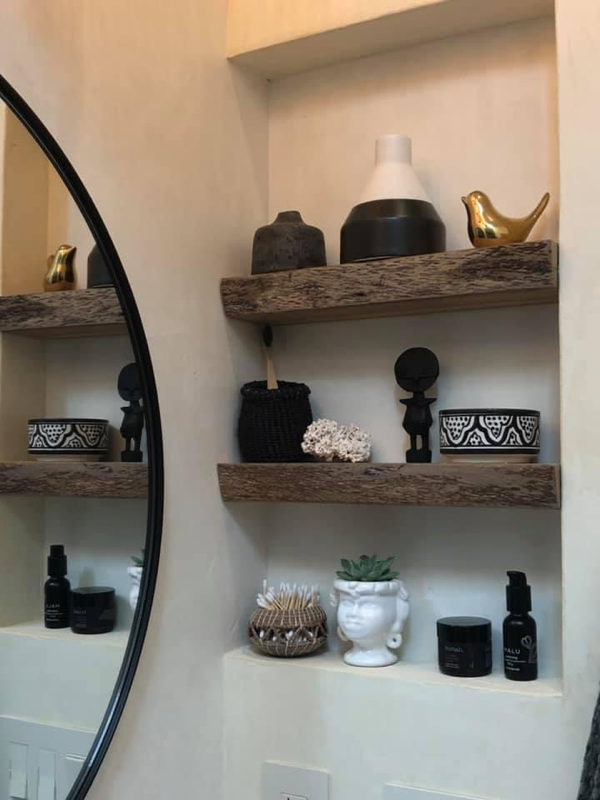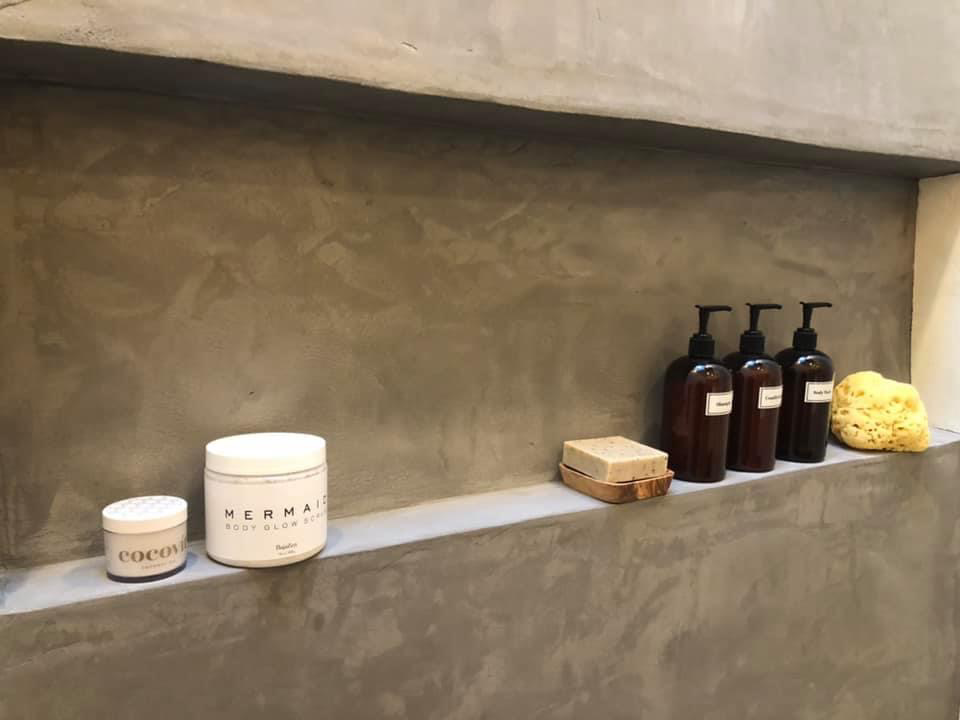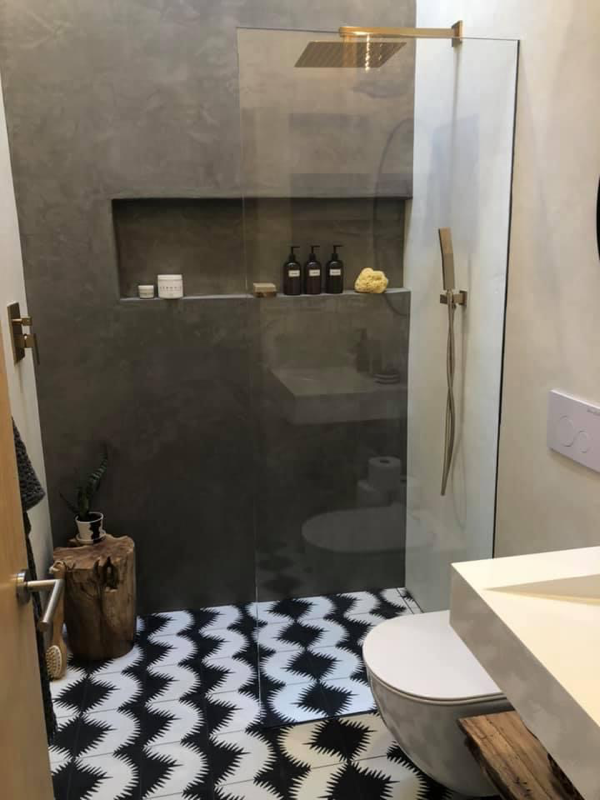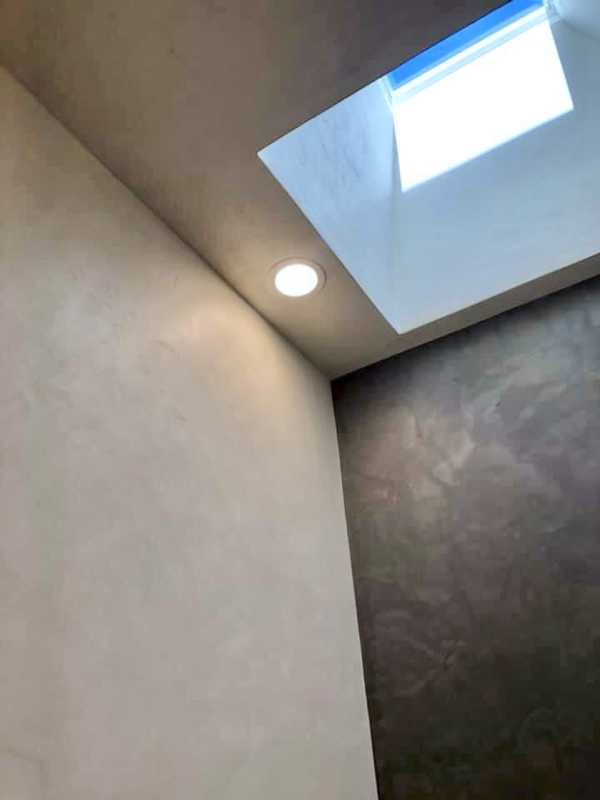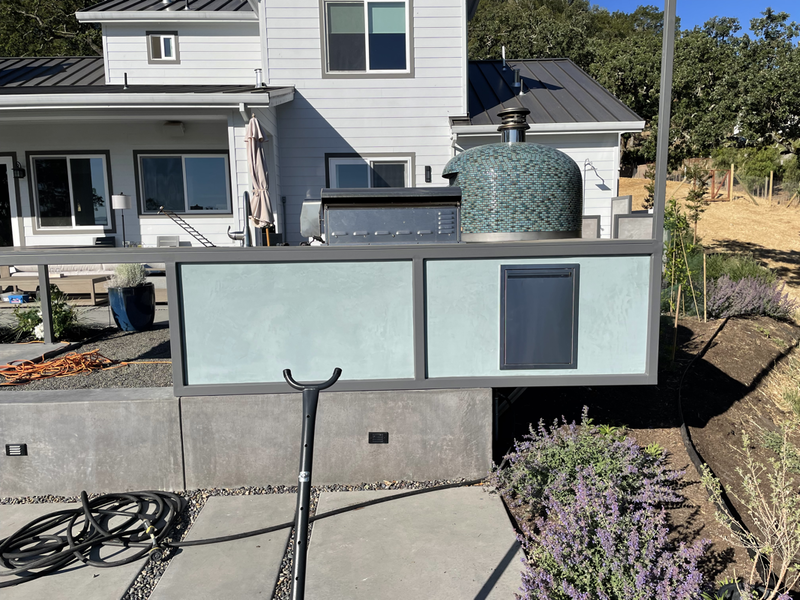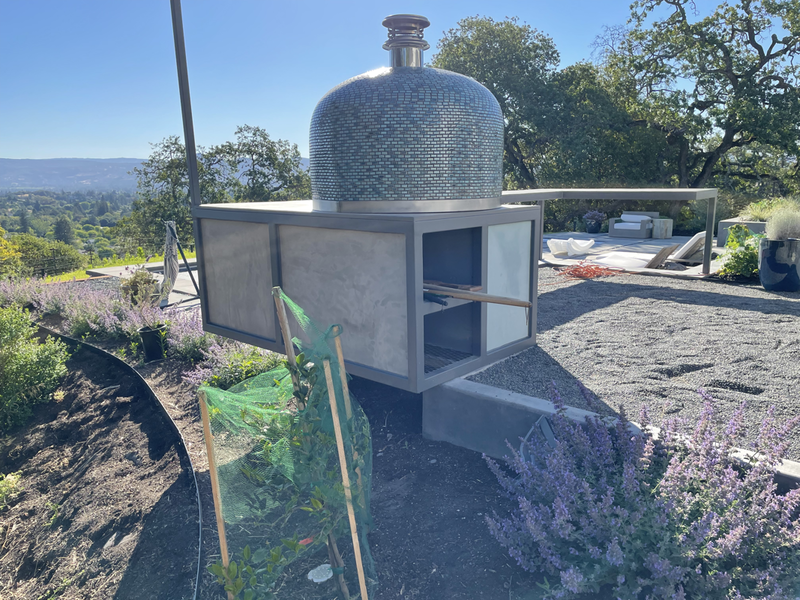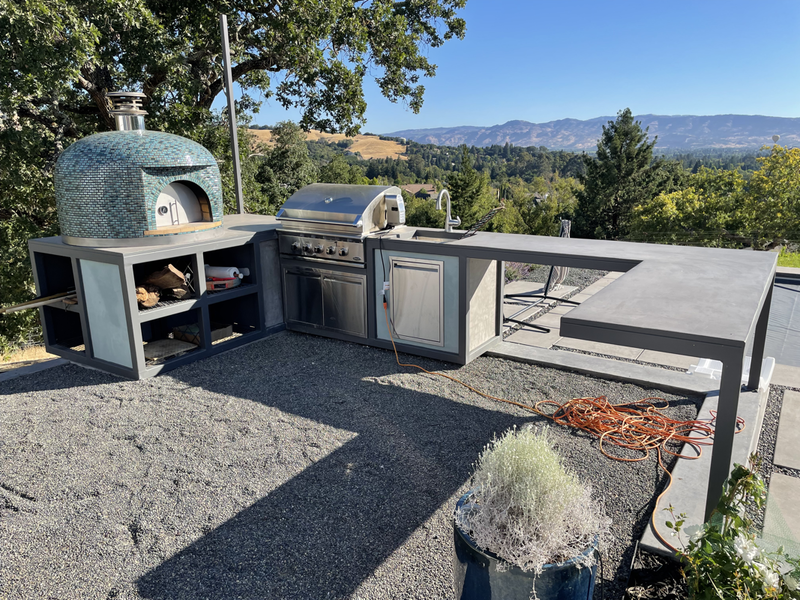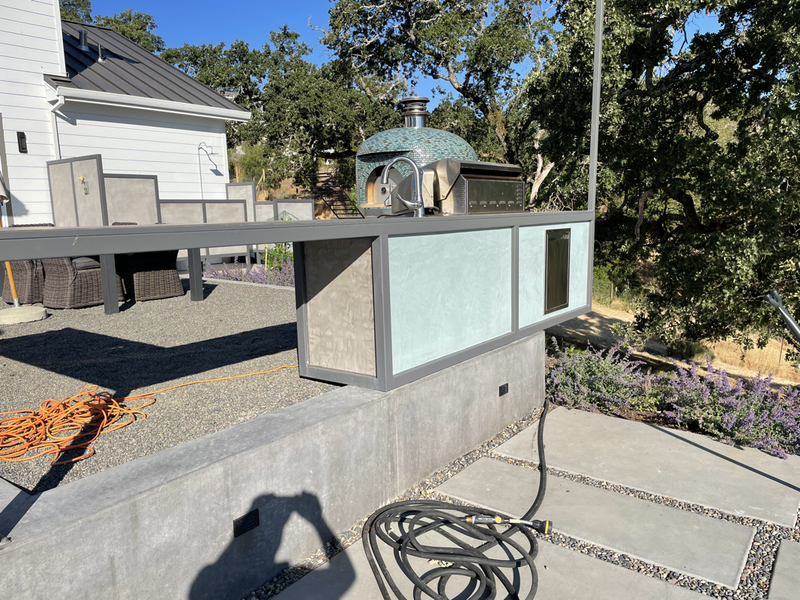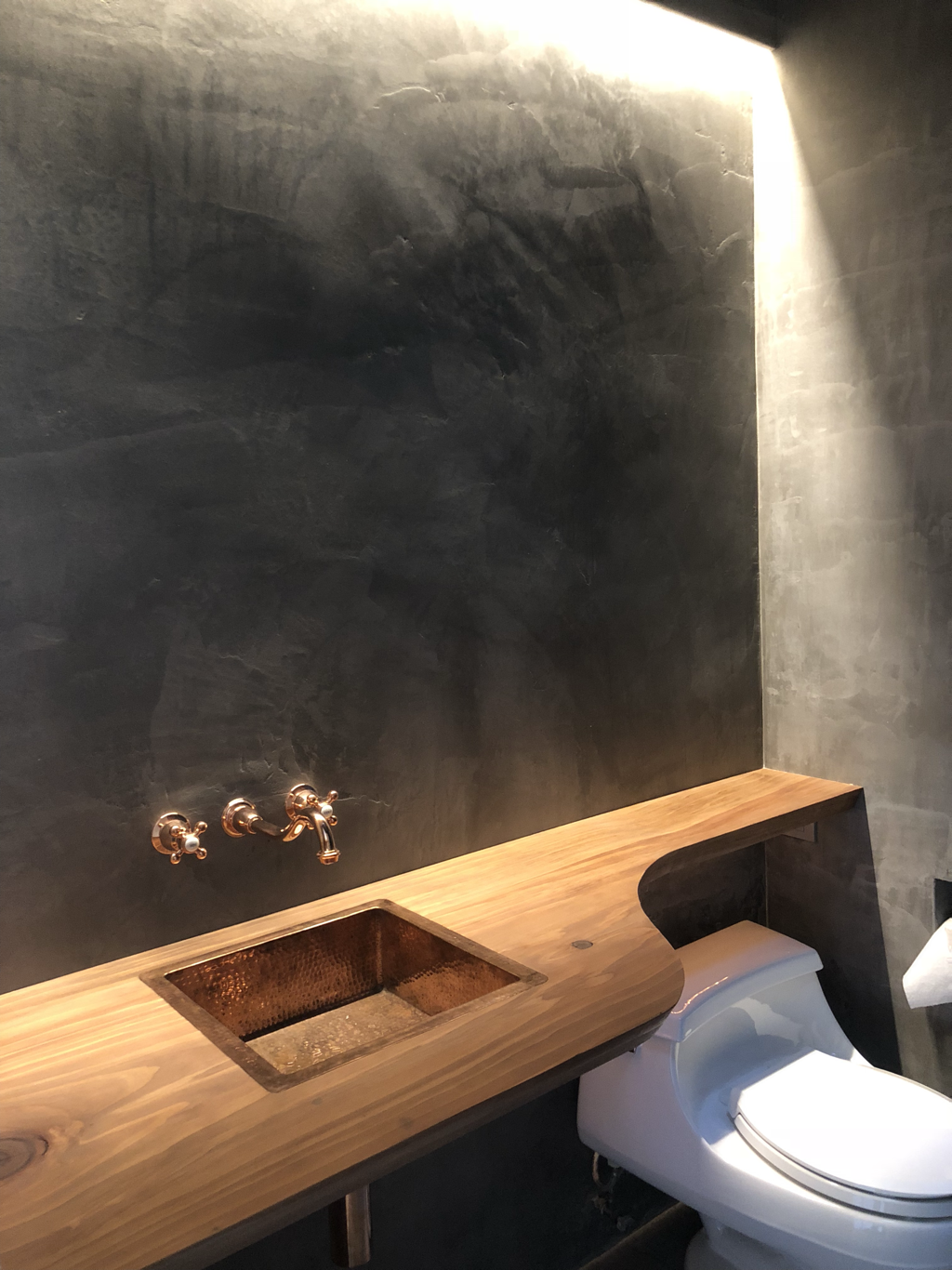TADELAKT
What is tadelakt?
Tadelakt is a traditional Moroccan wall surfacing technique composed of lime plaster and black soap made from olives. When the ingredients are combined, a chemical reaction between the two creates a waterproof membrane, making tadelakt walls suitable for wet areas like showers and baths. (If you’ve been so lucky as to have bathed in a traditional Moroccan hammam, the walls were likely tadelakt.)
Tadelakt is a traditional Moroccan wall surfacing technique composed of lime plaster and black soap made from olives. When the ingredients are combined, a chemical reaction between the two creates a waterproof membrane, making tadelakt walls suitable for wet areas like showers and baths. (If you’ve been so lucky as to have bathed in a traditional Moroccan hammam, the walls were likely tadelakt.)
Why use tadelakt?
Aside from its beauty, arguably the biggest perk to tadelakt is that there are no seams or grout lines in its application. It’s also made from entirely natural materials, does not contain volatile organic compounds, and it’s naturally mold and mildew resistant.
Aside from its beauty, arguably the biggest perk to tadelakt is that there are no seams or grout lines in its application. It’s also made from entirely natural materials, does not contain volatile organic compounds, and it’s naturally mold and mildew resistant.
Is tadelakt suitable for anywhere in the house?
Tadelakt is the Rolls-Royce of lime plaster finishes, so you’ll want to use it only in places where waterproofing is required—bathrooms mainly, and sometimes kitchens. It can be applied throughout the entire house, but do that only if you have money to burn; it’s significantly more expensive than standard lime plaster because of the burnishing required to make it waterproof, so use tadelakt in the wet areas and a regular lime plaster finish everywhere else.
Think about it this way: Where you might typically use paint, use regular lime plaster. But where paint won’t do (shower walls, maybe your kitchen backsplash), opt for tadelakt instead.
Tadelakt is the Rolls-Royce of lime plaster finishes, so you’ll want to use it only in places where waterproofing is required—bathrooms mainly, and sometimes kitchens. It can be applied throughout the entire house, but do that only if you have money to burn; it’s significantly more expensive than standard lime plaster because of the burnishing required to make it waterproof, so use tadelakt in the wet areas and a regular lime plaster finish everywhere else.
Think about it this way: Where you might typically use paint, use regular lime plaster. But where paint won’t do (shower walls, maybe your kitchen backsplash), opt for tadelakt instead.
Is tadelakt durable?
If people don’t care for it correctly, it can fail, using harsh chemicals like bleach will destroy the delicate limestone surface. But if the walls are maintained properly—meaning avoiding harsh cleaners—it’s remarkably easy to maintain. It can also be waxed yearly to make it additionally resistant to stains.
If people don’t care for it correctly, it can fail, using harsh chemicals like bleach will destroy the delicate limestone surface. But if the walls are maintained properly—meaning avoiding harsh cleaners—it’s remarkably easy to maintain. It can also be waxed yearly to make it additionally resistant to stains.
How should tadelakt be maintained?
Clean the tadelakt surface weekly with a sponge, black soap, and water.
Every time you clean the tadelakt with the black soap, you’re softly reconditioning it.
Clean the tadelakt surface weekly with a sponge, black soap, and water.
Every time you clean the tadelakt with the black soap, you’re softly reconditioning it.
If tadelakt gets damaged, can it be repaired?
No; tampering with one damaged section will destroy the waterproofing of the entire surface.
So if a shower wall is deeply dinged or the surface has been destroyed with bleach, the entire shower panel must be replaced.
However, that’s uncommon, In most showers, the main [maintenance] challenge is mildew on the grout lines.
An issue that tadelakt bypasses entirely.
No; tampering with one damaged section will destroy the waterproofing of the entire surface.
So if a shower wall is deeply dinged or the surface has been destroyed with bleach, the entire shower panel must be replaced.
However, that’s uncommon, In most showers, the main [maintenance] challenge is mildew on the grout lines.
An issue that tadelakt bypasses entirely.
Does tadelakt look like regular lime plaster?
Tadelakt has the organic, handmade look of lime plaster, but with a shinier finish due to the heavy burnishing.
It’s not reflective like Venetian plaster, but it’s very smooth to the touch.
Tadelakt has the organic, handmade look of lime plaster, but with a shinier finish due to the heavy burnishing.
It’s not reflective like Venetian plaster, but it’s very smooth to the touch.
How does tadelakt compare to other finishes, price-wise?
It’s fair to say tadelakt compares to high-end tile work. (Tile, of course, ranges widely in price, as does the cost and quality of installation and the level of skill required to install it.) Tadelakt cannot beat the price of the lowest-end tile from Home Depot,
But it can easily beat tile imported from Italy.
One way to keep costs in check is to use regular lime plaster elsewhere in the bathroom or kitchen where strict waterproofness is not required; those finishes are naturally mold and mildew resistant but their application is much easier (and therefore cheaper).
Use tadelakt only in a shower stall, bath surround, or kitchen backsplash where it will be continually hit with water.
It’s fair to say tadelakt compares to high-end tile work. (Tile, of course, ranges widely in price, as does the cost and quality of installation and the level of skill required to install it.) Tadelakt cannot beat the price of the lowest-end tile from Home Depot,
But it can easily beat tile imported from Italy.
One way to keep costs in check is to use regular lime plaster elsewhere in the bathroom or kitchen where strict waterproofness is not required; those finishes are naturally mold and mildew resistant but their application is much easier (and therefore cheaper).
Use tadelakt only in a shower stall, bath surround, or kitchen backsplash where it will be continually hit with water.
Is tadelakt easy to install?
Tadelakt is the most difficult, trickiest wall finish to apply if done right.
Some can claim that they do it, but to deliver a long-lasting job, it’s extremely laborious and requires precise attention to detail. Because humidity and temperature affect the curing time—and the slower the walls cure, the better— sometimes you have to stay with a wall past midnight, burnishing and babysitting it to keep the finish drying at the right pace.
Extensive labor required, but, like an art,
The result is gorgeous in the end.
Tadelakt is the most difficult, trickiest wall finish to apply if done right.
Some can claim that they do it, but to deliver a long-lasting job, it’s extremely laborious and requires precise attention to detail. Because humidity and temperature affect the curing time—and the slower the walls cure, the better— sometimes you have to stay with a wall past midnight, burnishing and babysitting it to keep the finish drying at the right pace.
Extensive labor required, but, like an art,
The result is gorgeous in the end.
Pros
Cons
- There are no seams or grout lines in tadelakt walls.
- Tadelakt is free of hazardous volatile organic compounds (which, due to perfectly legal but highly sneaky labeling, not all products labeled “Zero VOC” actually are.
- Tadelakt is made of entirely natural materials—lime plaster, olive oil soap, and natural pigments.
- Tadelakt is easy to maintain (using approved, gentle cleaners).
- It’s naturally mold and mildew resistant.
- Pigments will not fade over time.
Cons
- Tadelakt is more expensive than entry-level tile or solid surfaces.
- Accidental use of harsh cleaners like bleach will destroy the waterproof surface.
- Once damaged, the tadelakt surface cannot be repaired and must be replaced.
Specializing In
|
|

